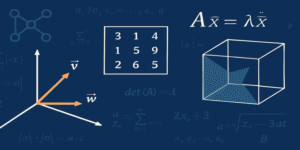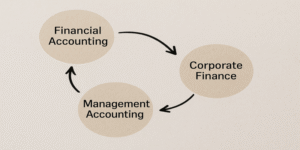Plagiarism is one of the most critical issues in academic writing. Universities expect students to demonstrate academic integrity by acknowledging sources properly, paraphrasing effectively, and avoiding misrepresentation of others’ work. The following quiz presents a set of scenarios and questions designed to test your understanding of plagiarism and academic honesty. Correct answers are provided along with explanations, enabling you to reflect on grey areas and develop stronger academic practices.
Question 1
Scenario: John changes four words in each paragraph of a borrowed essay to personalise it.
Answer Selected: This is acceptable practice at university.
Correct Answer: This is a clear case of plagiarism or cheating.
Explanation: Merely changing a few words is not true paraphrasing. John is still presenting someone else’s ideas as his own.
Question 2
Scenario: Jane discusses an essay with her friend for several hours, adopts all their ideas, and uses them in her essay.
Answer Selected: This is acceptable practice.
Correct Answer: This is somewhat of a grey area.
Explanation: While collaboration may be permitted, using another’s ideas wholesale without critical reflection or adaptation may breach academic integrity, depending on tutor expectations.
Question 3
Scenario: Three students share research material but write essays independently.
Answer Selected: This is plagiarism.
Correct Answer: This is somewhat of a grey area.
Explanation: Sharing resources is not automatically plagiarism, but care must be taken to ensure each student develops their own argument.
Question 4
Scenario: Jane reuses her friend’s old essay, changing only the name.
Answer Selected: Acceptable practice.
Correct Answer: This is a clear case of plagiarism or cheating.
Explanation: Reusing another person’s essay—even with permission—is plagiarism. Universities often use Turnitin or similar software that can detect recycled assignments.
Question 5
Scenario: Students divide writing tasks and then submit separate essays.
Answer Selected: Acceptable practice.
Correct Answer: This is a clear case of plagiarism or cheating.
Explanation: Each student must produce their own original work. Splitting and reusing sections undermines the principle of independent learning.
Question 6
Scenario: Alan writes from memory using notes and references but unintentionally mirrors the original source’s wording.
Answer Selected: Acceptable practice.
Correct Answer: This is a grey area.
Explanation: While Alan attempted to paraphrase and cite properly, his wording is too close to the source. He should aim for more substantial rephrasing.
Question 7
Scenario: John copies and pastes paragraphs from online and library sources without quotation marks or references.
Answer Selected: Acceptable practice.
Correct Answer: This is a clear case of plagiarism.
Explanation: Copying directly without citation constitutes academic theft.
Question 8
Scenario: Bill buys an essay online and submits it.
Answer Selected: Acceptable practice.
Correct Answer: This is a clear case of plagiarism or cheating.
Explanation: This is one of the most serious forms of misconduct, often leading to disciplinary action.
Question 9
Scenario: John writes his essay in his own words, adds quotations properly, and cites all sources.
Answer Selected: Grey area.
Correct Answer: This is acceptable practice.
Explanation: This represents correct academic writing, balancing paraphrasing, quotation, and referencing.
Question 10
Scenario: Mary writes that Queen Elizabeth II is the current monarch without citing.
Answer Selected: Acceptable practice.
Correct Answer: This is acceptable practice.
Explanation: Facts considered common knowledge (e.g., widely known historical or political facts) do not require citation.
Question 11
Scenario: A student translates a Spanish research article into English and submits it as their own essay without acknowledgement.
Correct Answer: This is plagiarism.
Explanation: Translating does not make the work original. The source must still be cited and referenced.
Question 12
Scenario: A student reuses parts of their own essay from a previous course.
Correct Answer: This is self-plagiarism.
Explanation: Even reusing one’s own work without disclosure breaches integrity. Universities require new submissions unless explicitly allowed.
Question 13
Scenario: A student paraphrases correctly but forgets to include an in-text citation.
Correct Answer: This is plagiarism.
Explanation: Without a citation, the source cannot be identified, and the writer appears to claim ownership of the idea.
Question 14
Scenario: A student includes long blocks of quotations with proper citation but little original analysis.
Correct Answer: This is poor academic practice.
Explanation: Although not plagiarism, over-reliance on quotations demonstrates a lack of critical thinking and synthesis.
Question 15
Scenario: During group work, one member writes the essay while others simply submit the same version under their names.
Correct Answer: This is plagiarism.
Explanation: Each student must contribute fairly. Submitting identical work violates principles of collaborative learning.
Question 16
Scenario: A student copies a definition directly from a dictionary without quotation marks but includes a reference.
Correct Answer: This is plagiarism.
Explanation: Exact wording requires quotation marks, even if the source is cited.
Question 17
Scenario: A student reads several articles, synthesises the key ideas, and presents an original perspective with references.
Correct Answer: This is excellent academic practice.
Explanation: This reflects true synthesis—integrating multiple perspectives to form a unique argument.
Question 18
Scenario: A student copies a graph from a government report, pastes it into their essay, and adds a small citation.
Correct Answer: This is plagiarism unless permission is granted and the figure is fully referenced.
Explanation: Graphs, tables, and figures are intellectual property and must be attributed properly, often requiring captions and copyright acknowledgment.
Question 19
Scenario: A student rewrites a paragraph using synonyms only, without changing structure.
Correct Answer: This is plagiarism.
Explanation: This is patchwriting—too close to the original. Effective paraphrasing requires restructuring and deeper understanding.
Question 20
Scenario: A student submits a draft to Turnitin, sees a high similarity index, and revises to reduce copied content.
Correct Answer: This is good academic practice.
Explanation: Using originality checkers responsibly helps students learn to improve their paraphrasing and referencing.
Plagiarism extends beyond outright copying; it includes self-plagiarism, patchwriting, overuse of quotations, and inadequate citation. Through this quiz, we see how some cases are clear-cut, while others are grey areas requiring critical judgement. By practising paraphrasing, summarising, and synthesising, and applying proper Harvard referencing, students can uphold the standards of academic integrity while demonstrating independent thinking.









